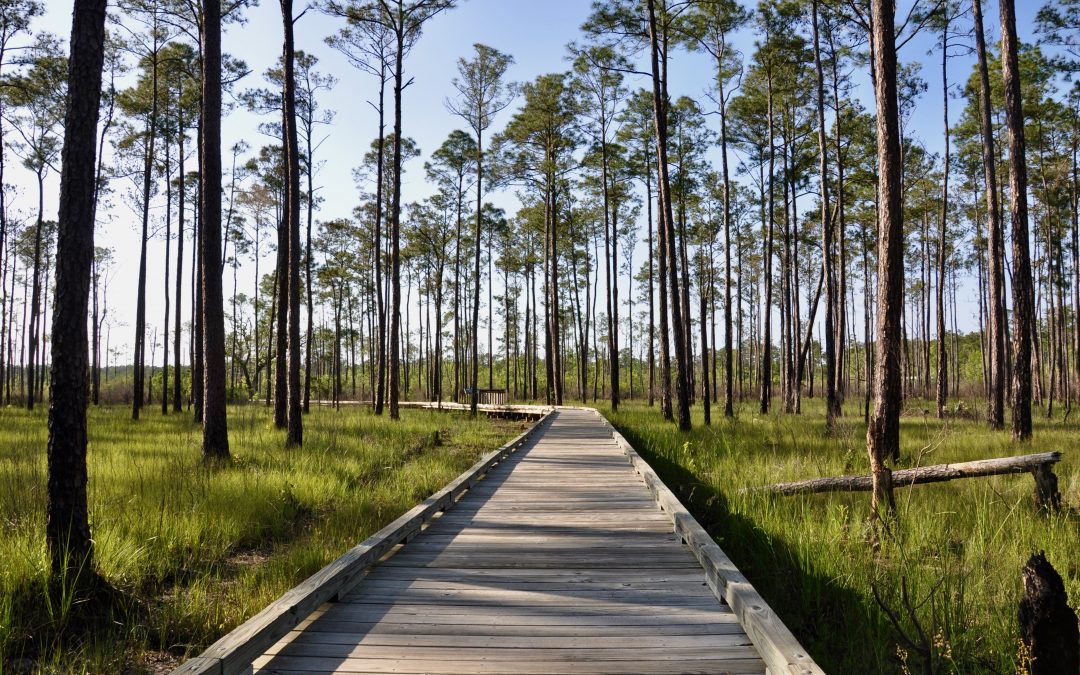
by admin | Sep 25, 2019 | Featured Posts, Greater Baton Rouge, Greater New Orleans, Most popular, North Louisiana
The words hiking and Louisiana don’t often go together. They certainly don’t conjure up images of rugged mountain trails past bubbling creeks. But if you know where to look, Louisiana offers a unique chance to get outdoors in a different way. Discover a boardwalk trail through a cypress swamp, a beautiful waterfall just over the state line or a taste of our “hill country.” Here are some of our favorite day hikes in Louisiana.
Jean Lafitte National Historical Park and Preserve and Wetland Trace
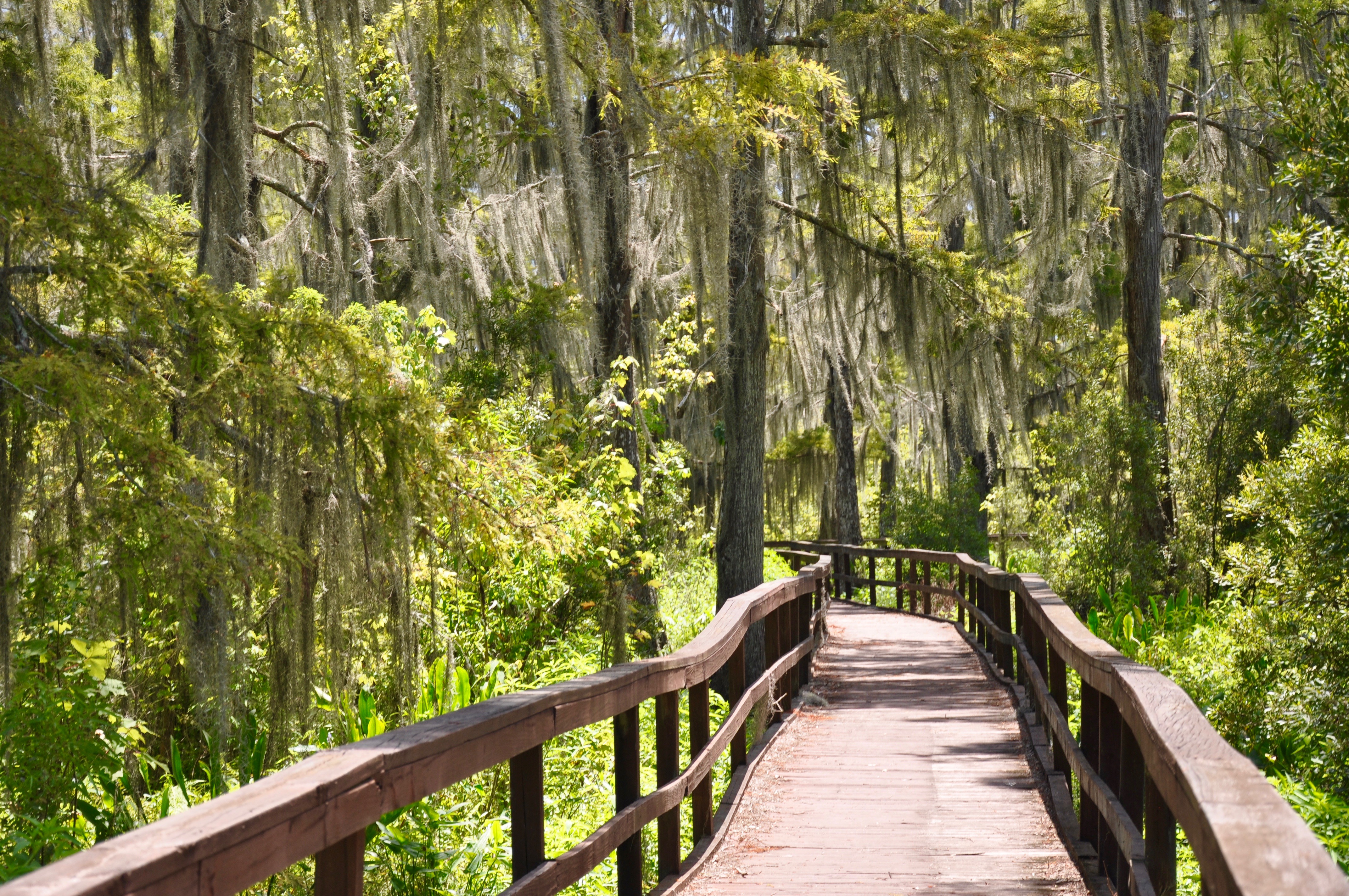
Jean Lafitte (both the park and the town) is about a half hour drive south of New Orleans. At the Barataria Preserve of Jean Lafitte National Historical Park and Preserve, walk through giant palmettos to the water’s edge, where frogs and alligators hide beneath the surface and banana spiders loom overhead. Take in another view of the swamp down the road at the Town of Jean Lafitte’s Wetland Trace. A little known gem, the trail is located behind the town’s Barataria Museum. Learn about the area’s most famous pirate – Jean Lafitte – before entering this quiet and secluded boardwalk. Look for blooming wild irises, six-foot-long snakes moseying along the boardwalk, or alligators peering silently out of the water.
Kisatchie National Forest
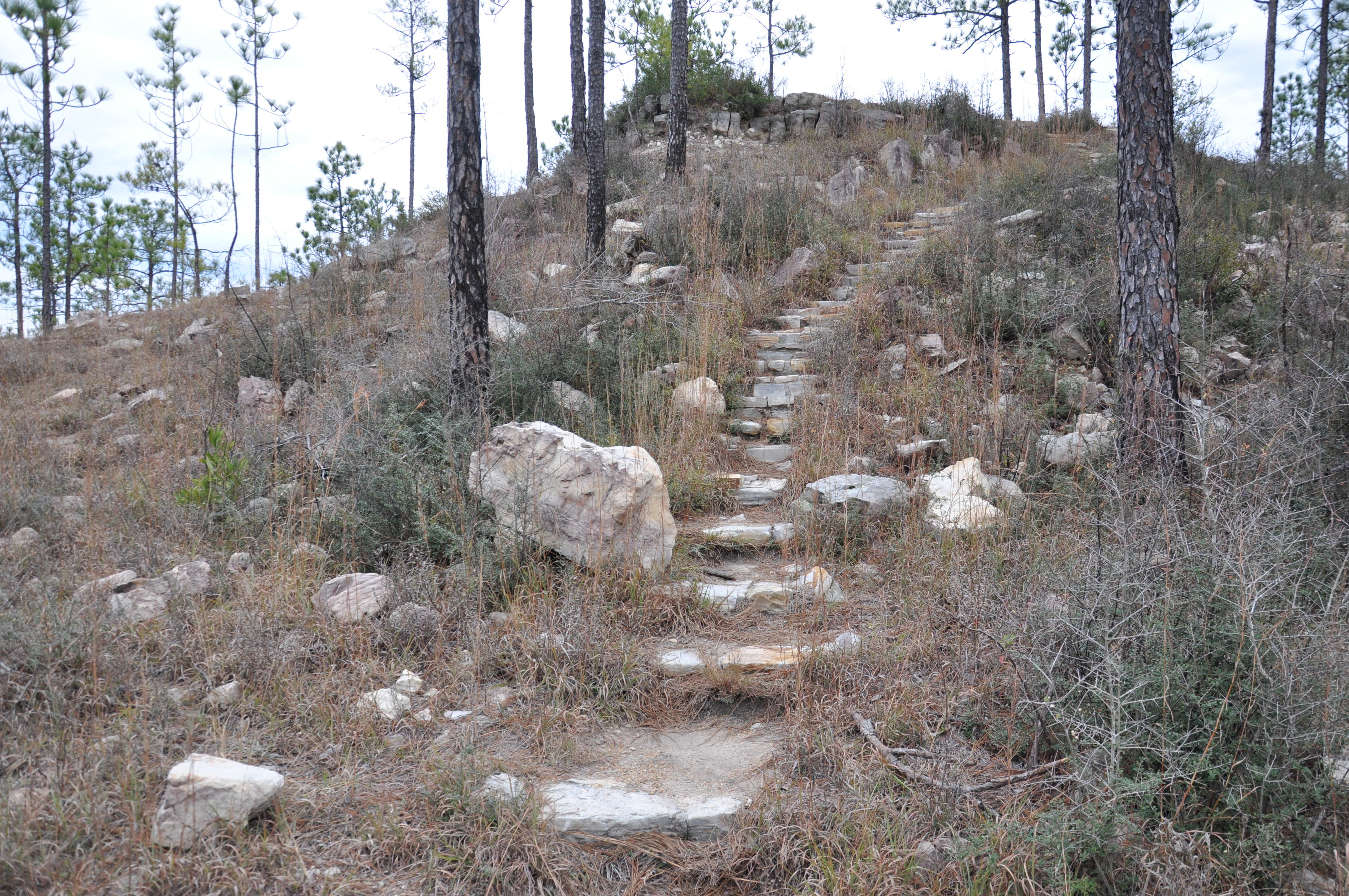 Any road trip north to Natchitoches should include a stop by Kisatchie National Forest. Divided into five districts, the forest offers an array of recreational opportunities – from hiking or biking to horseback riding or fishing. Choose from numerous trails, such as the 27-mile Wild Azalea Trail in the Calcasieu District–the longest trail in Louisiana. A perfect option for kids, though, is to drive the 17-mile Longleaf Scenic Byway and stop at the Longleaf Vista Interpretive Trail. A short stroll through bottomland hardwoods to a sandstone outcropping, the walk offers a seldom seen view of Louisiana’s “hill country.”
Any road trip north to Natchitoches should include a stop by Kisatchie National Forest. Divided into five districts, the forest offers an array of recreational opportunities – from hiking or biking to horseback riding or fishing. Choose from numerous trails, such as the 27-mile Wild Azalea Trail in the Calcasieu District–the longest trail in Louisiana. A perfect option for kids, though, is to drive the 17-mile Longleaf Scenic Byway and stop at the Longleaf Vista Interpretive Trail. A short stroll through bottomland hardwoods to a sandstone outcropping, the walk offers a seldom seen view of Louisiana’s “hill country.”
Clark Creek
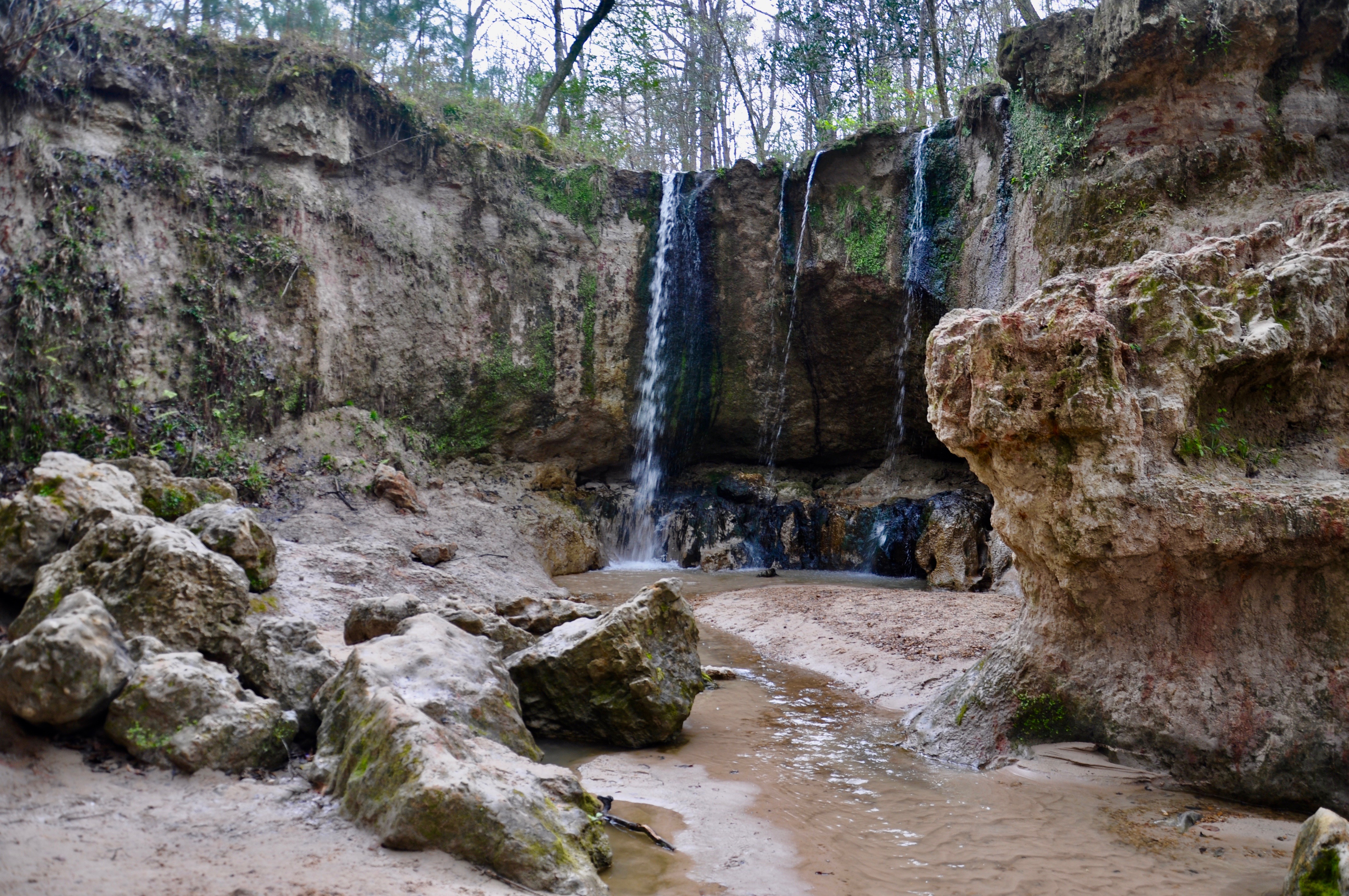 Technically in Mississippi, Clark Creek Natural Area is just across the border from St. Francisville. The trail begins along an excellent fossil hunting area and makes it way down to Clark Creek. Steep bluffs form the backdrop for the area’s waterfalls – a rare site in this part of the country. Spend the day here splashing through the creek and eating a picnic lunch by the waterfall. Be sure to carve out some time for a walk through picturesque St. Francisville on your way out.
Technically in Mississippi, Clark Creek Natural Area is just across the border from St. Francisville. The trail begins along an excellent fossil hunting area and makes it way down to Clark Creek. Steep bluffs form the backdrop for the area’s waterfalls – a rare site in this part of the country. Spend the day here splashing through the creek and eating a picnic lunch by the waterfall. Be sure to carve out some time for a walk through picturesque St. Francisville on your way out.
Big Branch Marsh National Wildlife Refuge
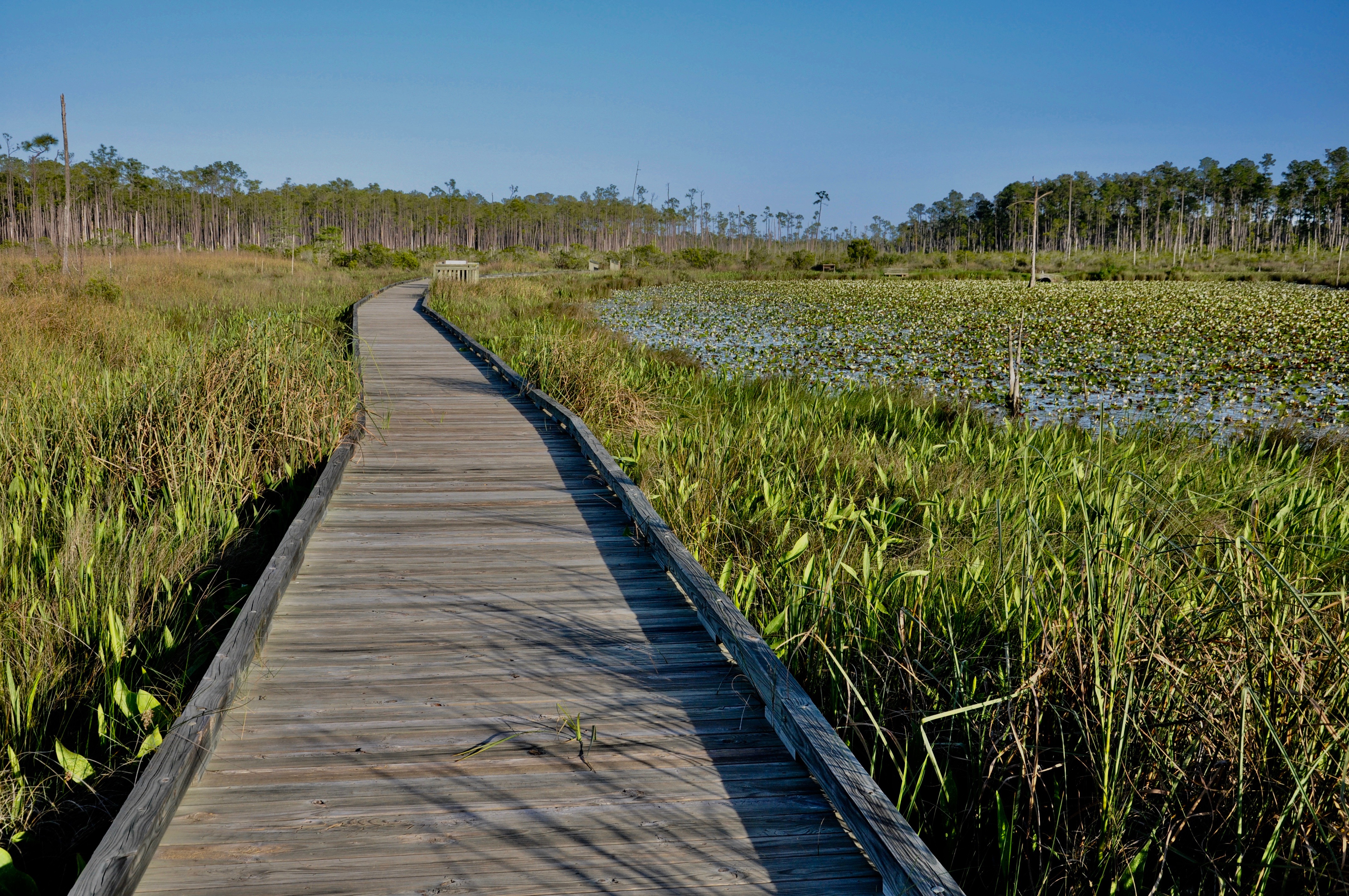
The Boy Scout Road trail at Big Branch Marsh National Wildlife Refuge takes you off the beaten path along Lake Pontchartrain’s northshore. Begin in a pine savannah leading to a half-mile interpretive trail along a boardwalk over a fresh mash. The trail then turns down a 2-mile, one-way gravel road known as Boy Scout Road. Walk through a forest to the edge of Bayou Lacombe. Years ago, schooners would sail here to carry locally made bricks across the lake to New Orleans. Don’t miss the Bayou Lacombe Visitor Center in Lacombe, featuring wildlife exhibits and trails through camellia, azalea and butterfly gardens.
Louisiana State Arboretum
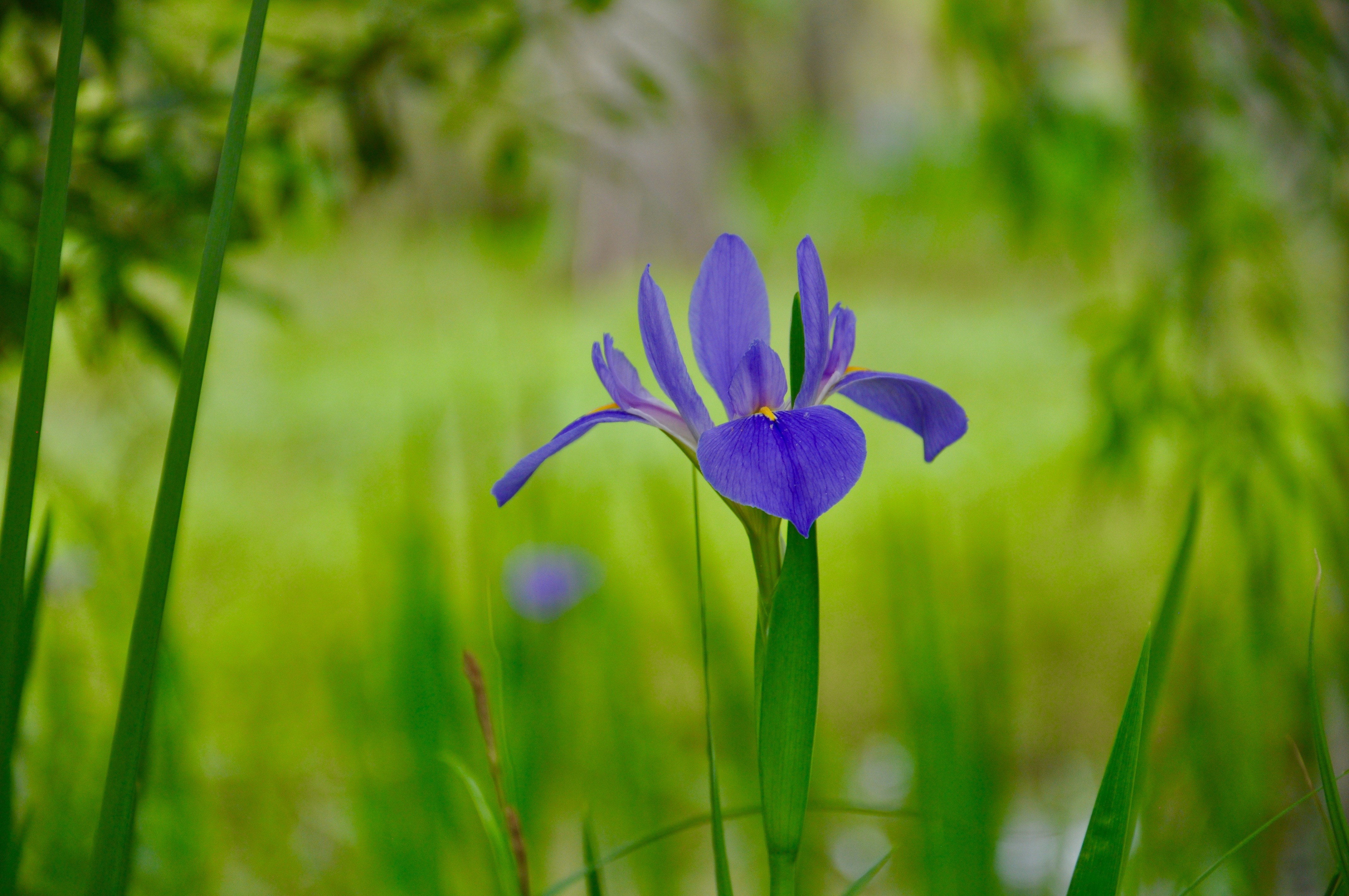
The 600-acre Arboretum came to fruition because of Louisiana naturalist Caroline Dormon. Located within Chicot State Park, the Arboretum features 6 miles of trails. The Walker Branch begins near Lake Chicot at the Nature Center. It ends near the Dormon Lodge, which has an exhibit to the noted naturalist. Several spur trails break off from the Walker Branch, leading to countless interpretive signs designating various species of trees. For the more adventurous, check out the 20-mile hiking trail around Lake Chicot.
This is actually just a tip of the list. Other hikes and walks we’ve discovered on our travels include the following:
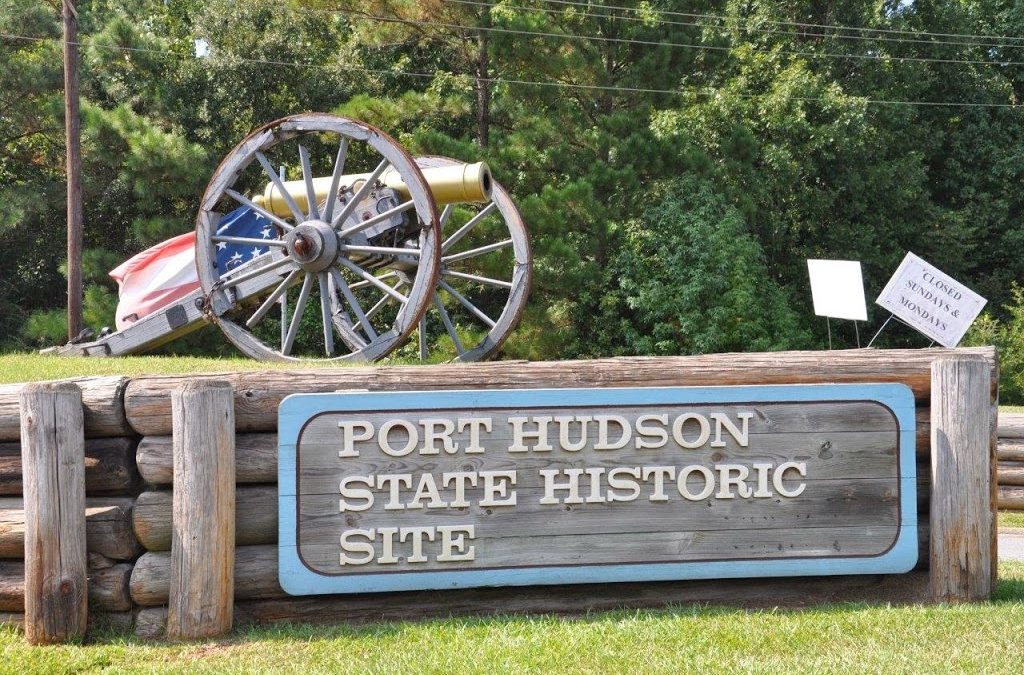
by admin | Oct 8, 2013 | Greater Baton Rouge
On previous trips to St. Francisville, we always head straight for the historic town. We walk the shaded main streets and shop at Grandmother’s Buttons before setting off to tour a nearby plantation. Although we see the sign for Port Hudson State Historic Site as we pass, we never stop. There’s always this slight aversion to taking toddlers to a battle site. On our most recent trip, though, we had a change of heart and decided it was finally time for us to veer off the road and check it out.
Port Hudson State Historic Site

As is most often the case, we were pleasantly surprised by our decision. A model state facility, Port Hudson was immaculately kept up. The site has 6 miles of wipe-open trails for exploring and a child-friendly ranger who welcomed the kids and their insanity with open arms. An informative exhibit inside the museum offered miniature models of soldiers and horses that captured the kids’ imaginations. Meanwhile, the sad details of the actual battle were left to those old enough to read.
The longest siege in American military history took place at Port Hudson, where for 48 days 6,800 Confederate soldiers held off 30,000 Union troops. There were thousands of casualties before the Confederates finally surrendered after hearing that Vicksburg had surrendered. The site is also the first battle in which African-American troops from Louisiana were allowed to participate. They fought for the Union army against the Confederates. Port Hudson later became a recruiting center for African-American troops.
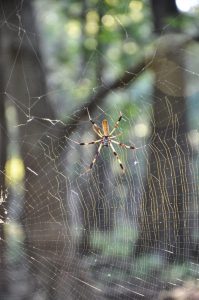
After brushing up on our history, we watched the ranger let the kids try on a canteen and practice moving a small cannon. Then we headed outside to the trail. It first led us through an open field to original cannons used in the Civil War battle here. Then, looping around, it immersed us into a shady forest with giant spiders weaving webs right over our heads. There were also small bluffs offering elevation changes not often seen in Louisiana.
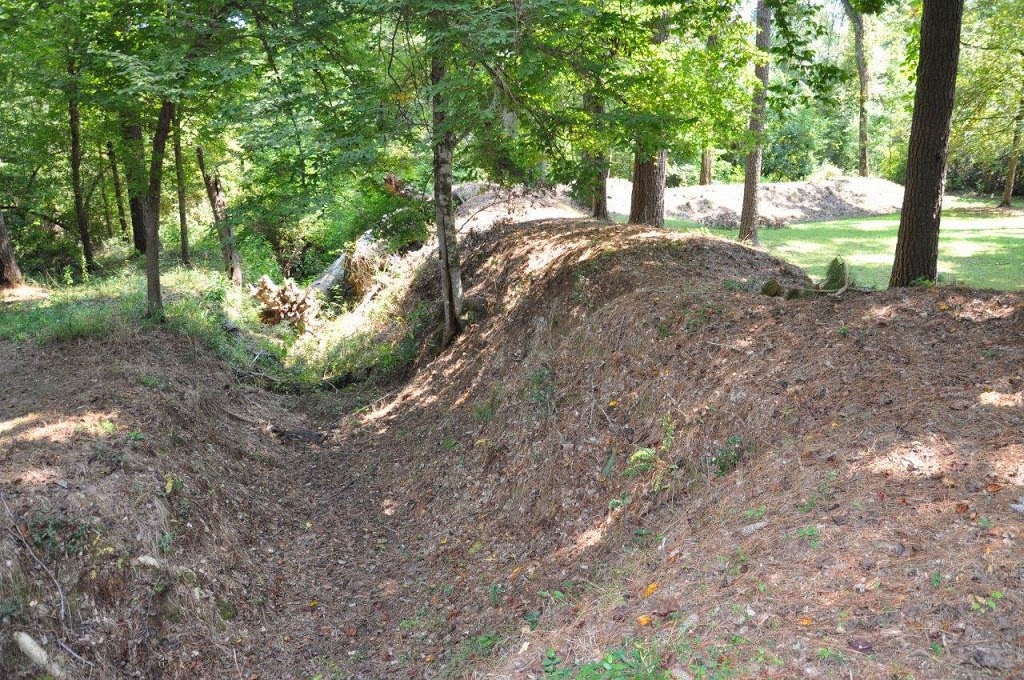
At Fort Desperate, an elevated boardwalk led us over the earthen hills built by the soldiers. Signs spoke of sharpshooters watching Union soldiers as they dug trenches to get closer to their enemy. We then crossed Foster Creek and found Fort Babcock, another series of earthen hills left behind to nature. Tiny frogs and lizards jumped and scurried about through the fallen leaves. While the kids tested their bug-catching skills, we tried to imagine thousands of young soldiers hiding here in these woods 150 years ago.
St. Francisville

The day was still early when we left Port Hudson, so we headed toward St. Francisville to pick up a bite to eat at Magnolia Cafe. On a whim, we decided to drive to the edge of town to view the Mississippi River. Surprisingly, the road leads nearly straight up to the water’s edge. From here, we turned back and stopped off to investigate an old train car left behind from the West Feliciana Railroad. The kids climbed over every inch of it before we herded them back into the car to find out if the road was open to Cat Island.
Cat Island National Wildlife Refuge
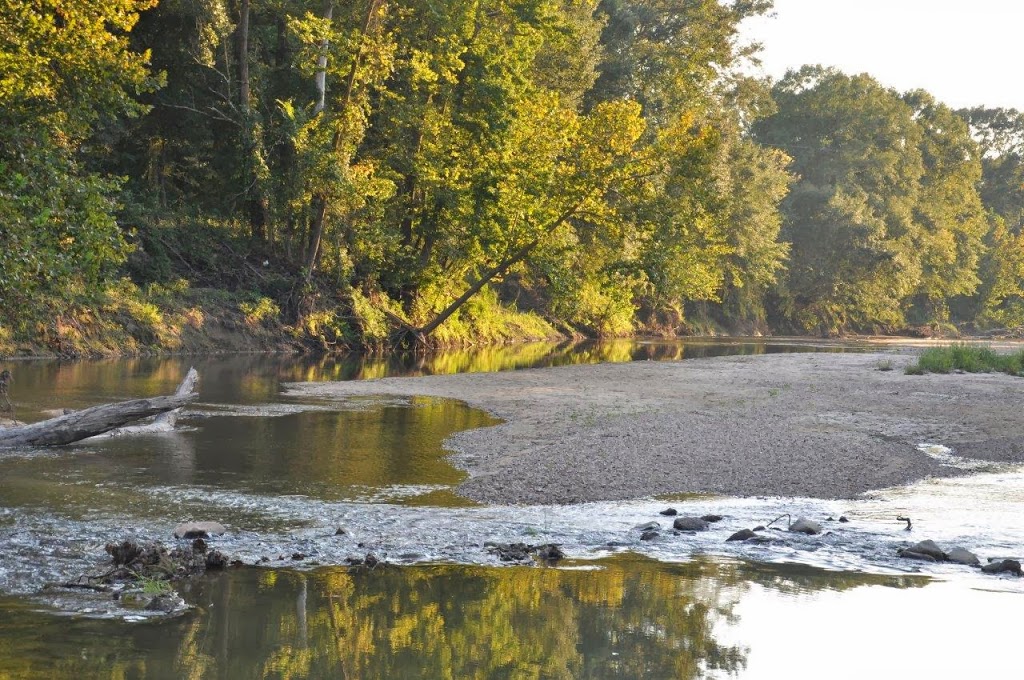
As we crossed the low-lying bridge over a local river, we were excited to realize that the road was not flooded as it had been on previous visits. A family jumped across rocks in the scenic river while we headed out into the country. We passed several sightings of grazing deer to the dirt road that leads to Cat Island National Wildlife Refuge. A lack of signage and our own poor guessing at directions helped us “get lost in Louisiana” yet again before we finally found our way to the destination.
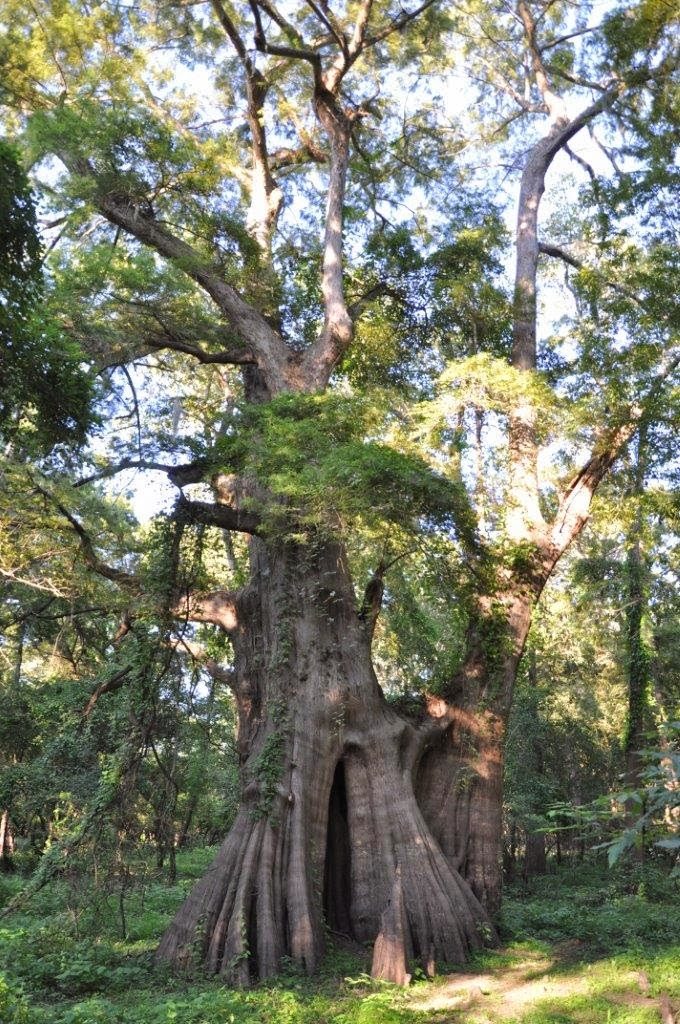
Inside the refuge, we parked at the trailhead for the old cypress trees and walked the short distance to the viewing platform for the National Champion Bald Cypress. The enormous, ancient tree dominates the old growth forest around it. We took our time admiring this grandfather of trees, which spends half of every year swimming in the floodwaters of the Mississippi River. It’s a sight to see and the perfect ending to our day of adventure.
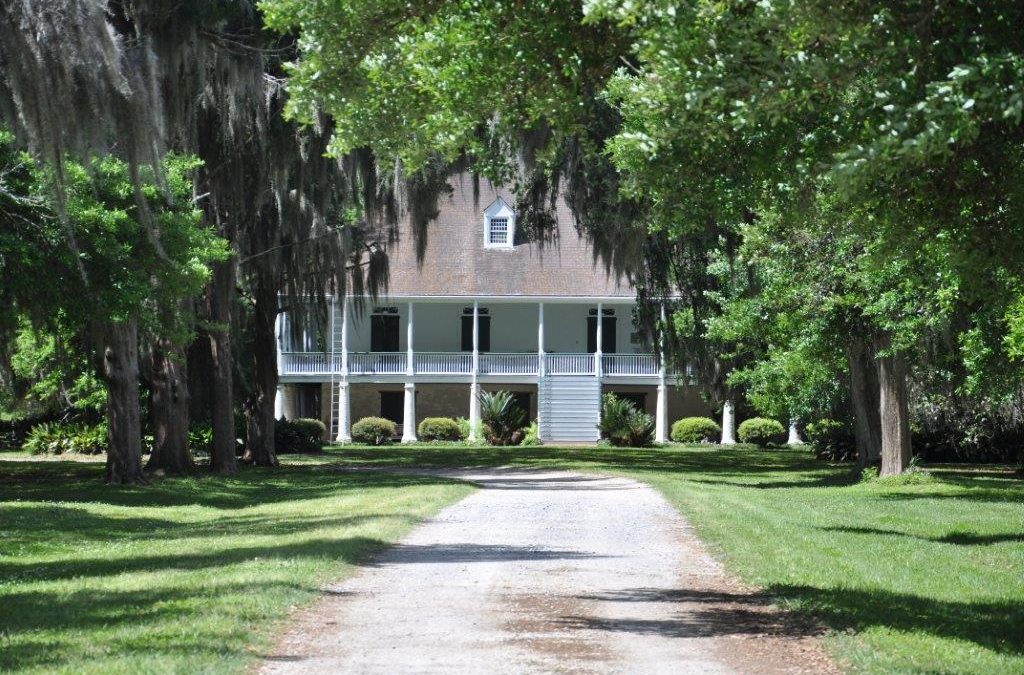
by admin | Apr 16, 2013 | Greater Baton Rouge
In all of our years visiting picturesque St. Francisville, we had never made it across the river to visit its sister city,
New Roads. When an advertised Historic House Tour caught my attention, our weekend plans were sealed and we loaded the car with toys for our two-hour drive from New Orleans.
 |
| Pier and boat house on False River |
We followed LA 1 and the Louisiana Scenic Bayou Byway to the southeastern edge of False River, an oxbow lake once part of the Mississippi River before it changed route and cut off the lake. The main road runs along a steep dropoff, creating a unique effect where the homes on our left were at eye level yet we were driving beside rooftops on our right. Graceful plantations with sprawling lawns dominated the road’s left side, and newer homes with lines of piers jutting out into the water stood to the right.
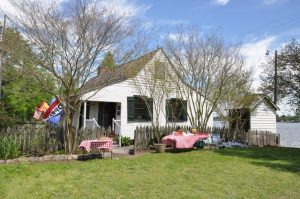 |
| Pointe Coupee Parish Museum and Tourist Center |
Colorful balloons bouncing in the wind beckoned us to stop at the Pointe Coupee Parish Museum and Tourist Center, where a table of coffee, homemade cookies and free gourds awaited our arrival. The kids darted through the small museum, not even bothering to look up before exiting out the back door to look for frogs in the sugar kettle out back. They were relatively contained within the fenced yard, so we managed to squeeze out a few minutes of conversation with the tour guides. Turns out the house itself was from nearby Parlange Plantation, and items in the museum documented life in 18th and early 19th century Louisiana. Listed on the National Register of Historic Places, the building, according to the National Park Service, is “a rare example of a log cabin type construction in a Creole type house.”
 |
| Randall Oak |
From here, we followed the balloon trail, our marker for all the open houses on the tour. Down the road was the Randall Oak, a beauty of a live oak making its way to the top of the Live Oak Registry. Although a center split gives the impression of two separate trees grown together, the tree’s owner assured us it was only one massive oak. Poydras College once stood nearby this location, where Professor James Randall wrote the poem, “Maryland, My Maryland,” which is today Maryland’s official state song. While here, we peaked next door at Mon Reve’, a lovely French Creole home that unfortunately had dropped out of the historic homes tour.
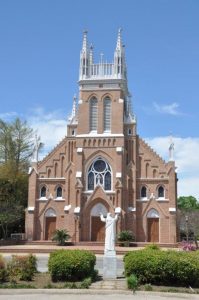 |
| St. Mary of False River |
Our map from the Visitor’s Center led us into downtown New Roads. As soon as we entered, we parked our car for a stroll along Main Street.We skirted in between buildings to access public docks where half a dozen people were out fishing for the day on False River. A few boats passed by as well, undoubtedly enjoying the warm sunshine and cool afternoon breeze. We took note of several interesting restaurants located in historic buildings, such as Ma Mama’s Kitchen, but we forewent a lengthy, sit-down lunch in favor of quick club sandwiches and grilled cheese at the local Cafe.
After eating, the kids exhausted some of their energy playing in the beautiful gardens surrounding St. Mary of False River Church, a Gothic-style church completed in 1907. A few blocks down, Pointe Coupee Parish Court House is another focal point of the town, resembling a medieval castle erected on Main Street.
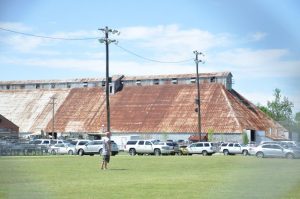 |
| Market at the Mill |
Back in the car, we visited more historic homes on the list, such as the LeJeune House, home to a family with 12 children–all of whom never married. The Samson House, also known as Pointe Coupee Bed and Breakfast, and the Pourciau House were another two landmarks on the tour. Our final stop in downtown was the Market at the Mill, a retired cottonseed oil mill that happened to be hosting its three-day, annual “shopping extravaganza” of antique and vintage items. From the look of the parking lot, it appeared to be a very popular destination.
The town and surrounding area is quite lovely, and we drove around a while longer just sightseeing while the kids snoozed in the backseat. For the route home, we detoured on LA78 toward Frisco and on to Livonia, searching for an Indian mound we had read about in the book New Roads and Old Rivers: Louisiana’s Historic Pointe Coupee Parish. Built between 700 AD and 1200 AD by the Coles Creek Culture, the mound is uniquely out of place next to a Dollar General Store. However, upon contacting the town, we learned that it was donated by the property owners to the town, and plans are in the works for highlighting its prominence in Louisiana’s history.
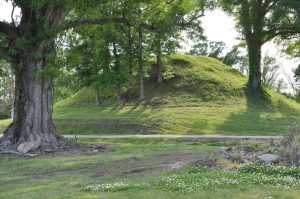 |
| Livonia Mound |
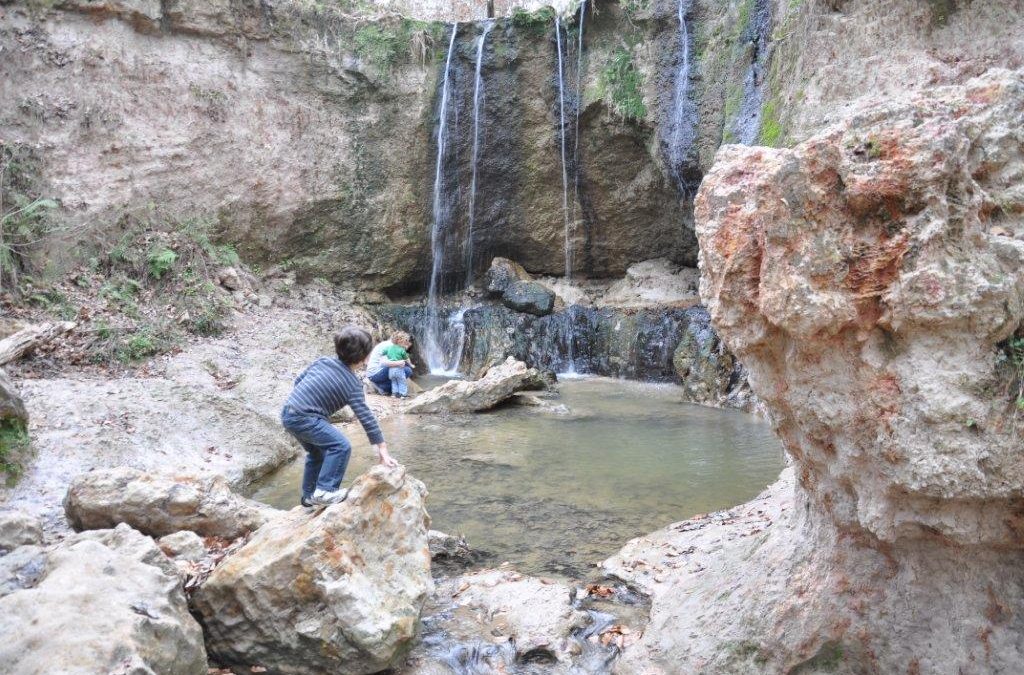
by admin | Dec 18, 2012 | Greater Baton Rouge
Our latest obsession is fossil hunting. During a recent trip to Percy Quin State Park, we were initially dismayed to find the normally beautiful lake now a drained, muddy bed. We made the most of it, though, venturing out into the squishy mud, collecting a few interesting rocks along the way. Back at home, the discovery of a document by Louisiana State University opened our eyes to what we had before us–rocks filled with imprints of tiny plants and sea creatures from hundreds of millions of years ago.
Now hooked, we had to find more. As it turns out, a good location for Louisiana fossil hunting is in the riverbeds of the Tunica Hills area. Unfortunately, fall is hunting season at Tunica Hills Wildlife Management Area, so we set our sites on neighboring Mississippi’s Clark Creek Nature Area.
.JPG) |
| Our first find |
A two and half hour drive from New Orleans, Clark Creek wasn’t quite close enough to make it without stopping for a sanity break for our 2 and 4-year-old. Pushing through Baton Rouge, we skidded to a halt in St. Francisville on the 400th “are we there yet??” interrogation. A very knowledgeable woman at the Visitor’s Center set us up with a brochure on Clark Creek as well as information on other attractions and, most importantly, food.
Looking for a quick place to pick up lunch, we ordered wraps at Cozy Corner Bistro and walked past the St. Francisville Inn to eat on the picnic tables in the adjacent park. While the kids climbed trees in the park, we glanced down at the Inn’s pebble driveway and discovered the first of the day’s fossils. In under ten minutes, we had found a half dozen river rocks bearing impressions of tiny ferns and marine animals. Giddy with excitement, we loaded back in the car and headed for Clark Creek.
.JPG) |
| Making friends at the Pond Store |
Google routed us along Tunica Trace to the Fort Adams Pond Road, which proved to be a bumpy ride pitted with potholes. Regardless, it was a nice jaunt into the countryside, past pastures of cows and horses and even an old Pond Store, circa 1881.
Just around the corner from the Pond Store was Clark Creek Nature Preserve. We parked alongside a handful of other cars and loaded our backpack with water and snacks. The 700-acre preserve boasts 50 waterfalls, champion trees and miles of hilly, strenuous trails.
.JPG) |
| Clark Creek’s Waterfall Trail |
We set out on the leaf-covered Waterfall Trail, admiring the scenery and listening to the birds chirping. Long rows of stairs bypassed steep slopes that turned slippery in wet weather, and much of the trail had a surprisingly sharp drop-off on one side. At the intersection with the Primitive Trail, we veered off the main trail to walk along the stream’s edge (often having to jump across to switch sides). It was here that we began taking breaks to examine rocks and had already found several interesting pieces when we heard the first waterfall.
Passing beyond a leaning tree, we found ourselves on top of the waterfall, looking down to the pool below. We backtracked through the woods and emerged again on the lower end, marveling at our first sight of a waterfall since the Smokey Mountains. The pool was warm to the touch, and the kids practiced their “mountain-climbing” by jumping across boulders.
.JPG) |
| Exploring the creek bed |
Although the Waterfall Trail leads to six waterfalls, we set our goals on seeing the first two, knowing that we’d most likely be carrying kids on our way out. The second was just as stunning as the first, making us realize the trip would have been a success even without the discovery of fossils.
By the time we made it back to the car, nearly three hours had passed and the sky was darkening with the incoming front. Despite being a bit sore, we were delighted with our day’s adventures through this picturesque nature preserve. Plus, we found plenty of brachiopod, crinoid and tabulate coral fossils for our coffee table’s “show and tell” bowl.
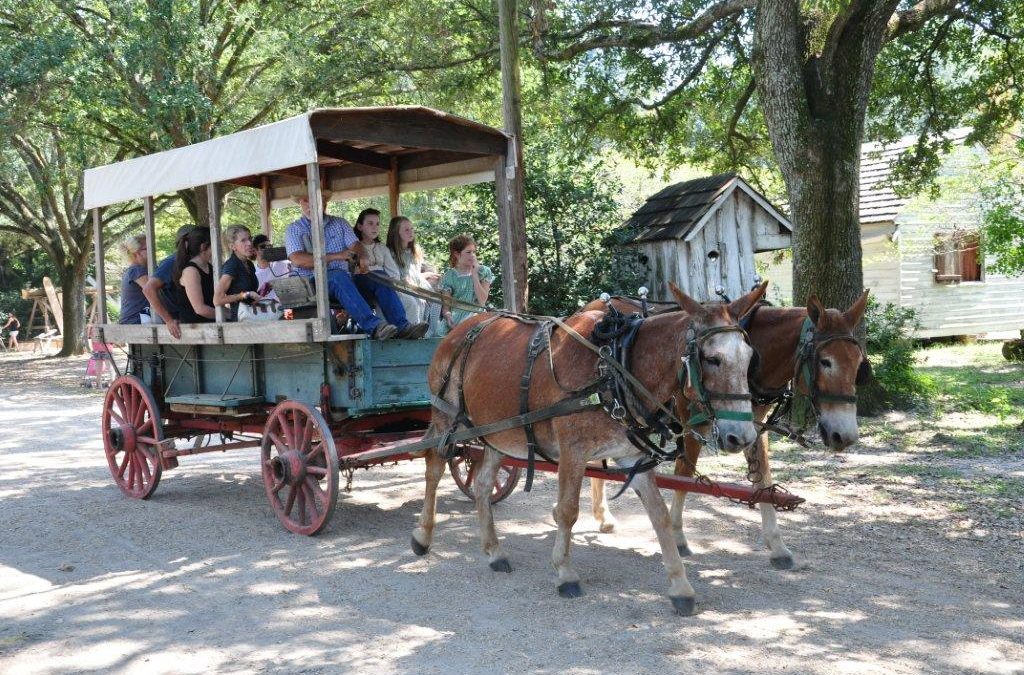
by admin | Sep 25, 2012 | Greater Baton Rouge
Saturday brought with it the first day of fall, and because you wouldn’t know it by the weather, we decided to celebrate by visiting the Harvest Days festival at Louisiana State University’s Rural Life Museum. For its 16th year running, the outdoor museum showcased a living history of 19th century rural Louisiana, and we spent the day walking through their fascinating lifestyle.
 |
| 19th century violinist |
The journey through time began inside the exhibit barn, where you can find anything and everything from antique farm equipment to an old hearse to a baby walker. The normally quiet, static museum was a bustle of activity, with visitors mingling with docents, a woman carrying her pet duck puppet and wood carvers whittling away at small figures. We stopped to visit with one woman rhythmically pedaling a spinning wheel, turning balls of wool into a long, fine thread. She explained how wool is easier to spin than cotton, which requires a faster turn of the wheel because it is a slicker material.
.JPG) |
| Mule and buggy rides |
As you exited the back door, the village emerged, with sleeping tents set up throughout the property and small cooking fires smoldering in the day’s heat. Two mules pulled up in front of us, tugging behind them a buggy full of passengers, and 2-year-old August launched into a series of neighs. Our normally fearless children were actually timid around the animals, so we passed up the buggy tour and opted to walk instead.
“Homeowners” led us on guided tours through their 200-year-old houses, proudly pointing out the furniture and architecture of each. We watched the blacksmith stoke his fire until it was nice and hot, and the kids took turns pulling the rope on the steam engine to make the whistle blow. A harvest spread dominated the kitchen, where we encountered the delicious smells of pumpkins stuffed with baked apples and fried sweet potatoes.
.JPG) |
| Louisiana folk architecture at the museum |
The boom of a cannon was a constant background noise, reminding us that a Civil War reenactment was taking place across the field. We headed in the opposite direction, though, away from the “scary” noise and over toward the corn maze. Along the way, we stopped to smell some cane syrup being boiled and took a turn at grinding corn off the stalk.
An opening in the back fence led to the labyrinth of corn, where our 4-year-old pointed the way ahead. I have to admit, we finally cheated and charged right through the corn to get to the other side. Our reward was a handful of water balloons meant to be launched at wooden targets, but instead popped on top of the kids’ heads. Soaked through, they were delighted by the afternoon of fun and begged to return again.
.JPG) |
| The daunting corn maze |
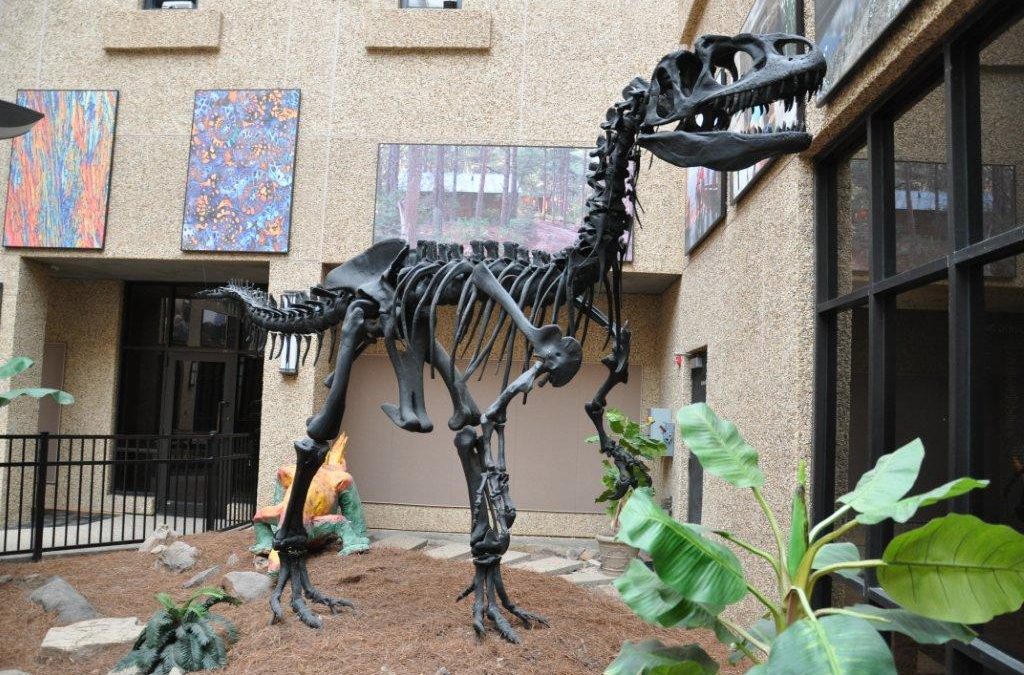
by admin | Feb 1, 2012 | Cajun Country, Greater Baton Rouge
Louisiana is not known for dinosaurs – that much I have learned through my Internet searching. Now Wyoming, Colorado and the Dakotas, they’re a different story. Unfortunately the pleads of a three-year-old are not compelling enough to make me drive 26 hours to view a bunch of skeletons. Lucky for him, and the rest of our family, the Lafayette Science Museum is featuring the American Museum of Natural History’s traveling “Dinosaurs” exhibit.
 |
| T-Rex on display at the Lafayette Science Museum |
The drive is still a bit much to make without stopping, so we planned a layover at a friend’s house in Baton Rouge. While in town, we couldn’t pass up a glimpse of LSU’s Mike the Tiger, and the trip to campus reminded us of old anthropology classes in the Howe Russell building and the fossils and rocks on display there.
 |
| LSU’s allosaurus skeleton |
It promised to be a great “starting off” site for our dinosaur adventures, but when we entered the front doors, Charles nearly squealed with delight at the sight before us. Although the child can’t read, he instantly spouted out that this skeleton on display was “an allosaurus – a carnivore that walked on two feet and had three fingers, not two like T-Rex.” (I must say, I will never understand his obsession with the fingers.) The discovery kept us occupied for quite some time, and Charles discussed the similarities and differences of dinosaurs in lengthy detail well into the night.
The next morning we moved on to Lafayette and headed into the heart of downtown. Our first stop was brunch at The French Press, where we gorged ourselves on the Cajun Benedict: toasted French bread, Hebert’s boudin and two poached-medium eggs topped with chicken and andouille gumbo and fresh scallions. Shortly after, we waddled across the Parc Sans Souci toward the Lafayette Science Museum.
 |
| Lafayette Science Museum |
While the planetarium is closed for a digital upgrade, the main attraction until March 11 is the “Dinosaurs: Ancient Fossils, New Discoveries” exhibit. The $5 tickets seemed like a bargain when we entered the far hall and came face to face with a giant T-Rex skeleton (complete with two fingers on each hand). He beckoned us inside to explore a life-sized steel and fiberglass apatosaurus, fossilized footprints and a diorama of eastern Asia as it looked 130 million years ago. After making two rounds through the displays, we grabbed some coloring sheets at the end and walked out the doors. I paused in confusion as we exited – what, no gift shop? Although a huge missed opportunity for the museum, it was a lifesaver for us, as gift shops almost always end in meltdowns.
 |
| Cypress trees at Lake Martin |
The afternoon’s adventures winded down with a short drive out into the countryside and a leisurely stroll through the Nature Conservancy’s Cypress Island Preserve at Lake Martin. A loop boardwalk and levee trail offered prime glimpses into the moss-covered, cypress tupelo swamp that serves as a bird haven in late spring. Sunsets are reportedly divine at this picturesque spot, and the lake comes to life when thousands of herons, egrets and roseate spoonbills make this their home during nesting season. The area was scarcely occupied when we visited, though, and I left with the impression that we had found a jewel tucked away inside the state.


 Any road trip north to Natchitoches should include a stop by Kisatchie National Forest. Divided into five districts, the forest offers an array of recreational opportunities – from hiking or biking to horseback riding or fishing. Choose from numerous trails, such as the 27-mile Wild Azalea Trail in the Calcasieu District–the longest trail in Louisiana. A perfect option for kids, though, is to drive the 17-mile Longleaf Scenic Byway and stop at the Longleaf Vista Interpretive Trail. A short stroll through bottomland hardwoods to a sandstone outcropping, the walk offers a seldom seen view of Louisiana’s “hill country.”
Any road trip north to Natchitoches should include a stop by Kisatchie National Forest. Divided into five districts, the forest offers an array of recreational opportunities – from hiking or biking to horseback riding or fishing. Choose from numerous trails, such as the 27-mile Wild Azalea Trail in the Calcasieu District–the longest trail in Louisiana. A perfect option for kids, though, is to drive the 17-mile Longleaf Scenic Byway and stop at the Longleaf Vista Interpretive Trail. A short stroll through bottomland hardwoods to a sandstone outcropping, the walk offers a seldom seen view of Louisiana’s “hill country.” Technically in Mississippi, Clark Creek Natural Area is just across the border from St. Francisville. The trail begins along an excellent fossil hunting area and makes it way down to Clark Creek. Steep bluffs form the backdrop for the area’s waterfalls – a rare site in this part of the country. Spend the day here splashing through the creek and eating a picnic lunch by the waterfall. Be sure to carve out some time for a walk through picturesque St. Francisville on your way out.
Technically in Mississippi, Clark Creek Natural Area is just across the border from St. Francisville. The trail begins along an excellent fossil hunting area and makes it way down to Clark Creek. Steep bluffs form the backdrop for the area’s waterfalls – a rare site in this part of the country. Spend the day here splashing through the creek and eating a picnic lunch by the waterfall. Be sure to carve out some time for a walk through picturesque St. Francisville on your way out.


















